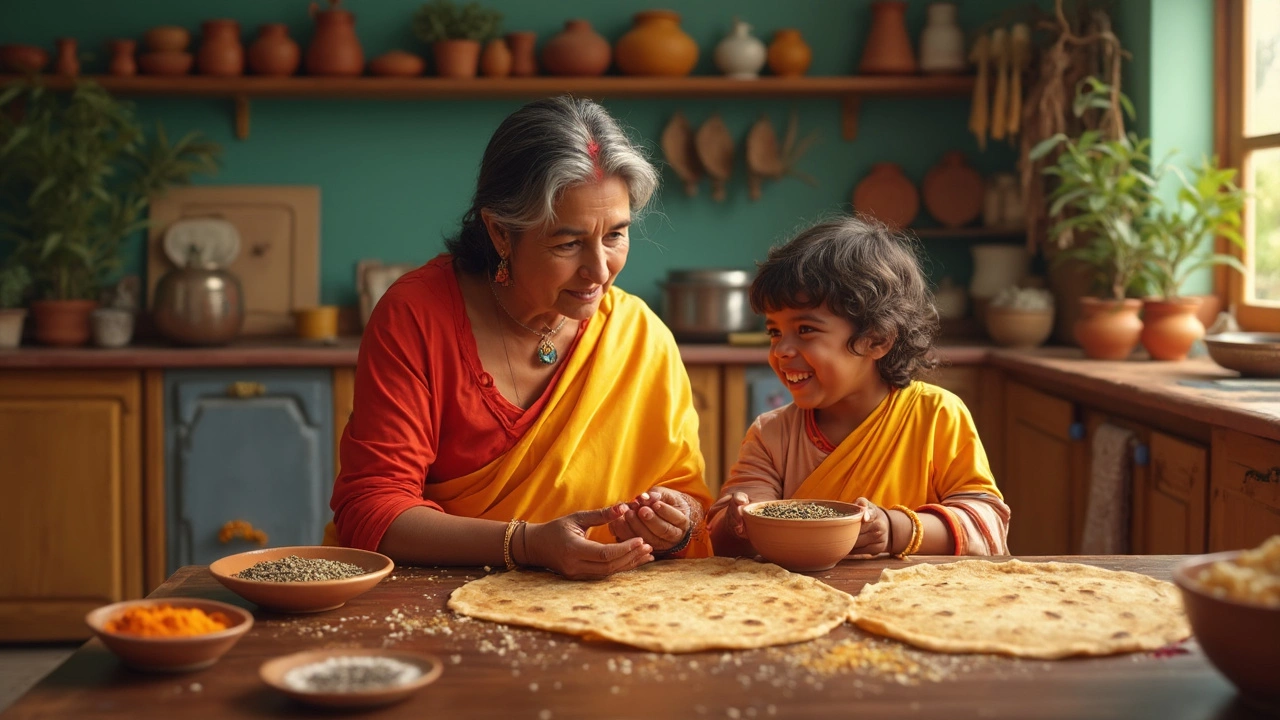Multigrain Roti: Nutritious Indian Flatbread Made Simple
When working with multigrain roti, a mixed‑grain flatbread that blends wheat, millet, barley, and sometimes soy or oats to boost fiber, protein, and flavor. Also known as mixed‑grain chapati, it offers a heart‑healthy alternative to plain wheat roti while keeping the soft, pliable texture you expect from Indian bread. The broader category roti refers to any unleavened flatbread cooked on a hot tawa, and whole wheat flour is the traditional base that provides gluten for elasticity. Adding multigrain flour introduces diverse nutrients and a nuttier taste, but it also changes dough hydration needs.
If you’re looking for a healthier twist on the classic multigrain roti, you’re in the right place. The key to success lies in a few simple principles. First, multigrain roti combines different grains, which increases fiber content and makes the bread more filling. Second, proper dough hydration enables the flatbread to puff evenly – a trick borrowed from the classic roti‑puffing guide. Third, a pinch of baking soda or a splash of oil can soften the crumb without compromising the nutty flavor, a tip highlighted in our "Baking Soda in Roti" and "Best Time to Add Oil in Roti Dough" posts.
Key Tips for Perfect Multigrain Roti
Start with a 1:1 ratio of whole wheat flour to multigrain flour; adjust water gradually until the dough feels soft but not sticky. Let the dough rest for at least 15 minutes – this relaxes the gluten and gives the grains a chance to absorb moisture. When rolling, aim for a diameter of about 6‑7 inches; a slightly thicker roti helps the mixed grains cook through without tearing. Cook on a pre‑heated tawa over medium heat; if the roti puffs up, you’ve hit the sweet spot of steam inside the dough.
Common problems like flat rotis often stem from under‑hydrated dough or insufficient resting time. Adding a teaspoon of baking soda (as discussed in "Baking Soda in Roti") can create tiny air pockets that aid puffing. Likewise, brushing a thin layer of oil into the dough before rolling, a method proved by the "Best Time to Add Oil in Roti Dough" article, yields a softer bite and prevents the multigrain crust from drying out.
Beyond texture, multigrain roti packs a nutrition punch. Millet contributes magnesium, barley adds beta‑glucan for cholesterol control, and soy flour ups the protein count. Pair the roti with dal, paneer, or a fresh chutney for a balanced meal that keeps you energized through the day.
Below, you’ll find a curated list of articles that dive deeper into each of these aspects – from troubleshooting puff issues to mastering the perfect dough hydration. Browse through the collection to turn every multigrain roti attempt into a tasty, healthy success.

Whole Wheat Roti vs. Multigrain Roti: Health Benefits Compared
Choosing between whole wheat roti and multigrain roti for a healthier diet involves understanding their nutritional profiles. Explore the calorie content in different roti variants, including those topped with ghee, to make informed dietary choices. Learn which roti might fit best into your lifestyle based on essential nutrients and fiber content.